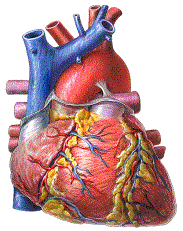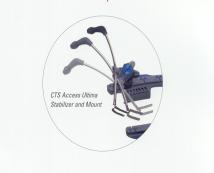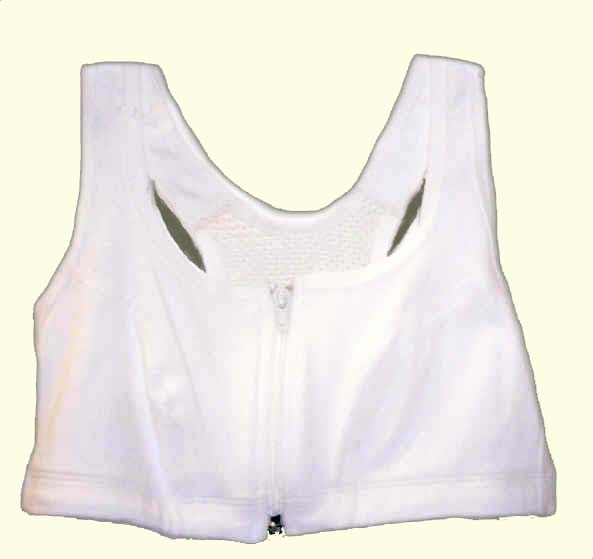












          |
   |

|
Successful advances in technology allow cardiac surgery to be performed utilizing new innovative techniques on selected populations. The following information will give you an idea of what is happening in cardiac surgery today so you will be better able to discuss surgical options with your doctor. |
There are now many choices and options for heart surgery. The following procedures can be performed:
Many of the above procedures can now be performed without use of the heart-lung bypass machine, thereby avoiding related complications with its use.
The traditional full sternotomy involves making an incision in the middle of the chest from the top of the sternum to the bottom. This method of heart surgery is the standard approach where the entire rib cage is opened and the heart muscle is fully exposed. The patient is placed on heart-lung bypass which allows oxygenated blood to circulate to the body while it bypasses the heart. The heart-lung bypass machine allows the surgeon to stop the heart and perform the surgery while the heart muscle is not moving.
The benefit of a full sternotomy is full exposure. The surgeon can reach all of the coronary arteries and manipulate the heart. The disadvantages are a longer recovery period for the patient and significant musculo-skeletal discomfort. There is also higher risk of stroke, kidney damage and bleeding when a patient is placed on a heart-lung bypass machine. All patients undergoing heart surgery are candidates for this approach.
|
|
|
The Traditional Full Sternotomy - the entire sternum is cut. |
Another option is the full sternotomy but with an "off bypass" approach. Although the patient will still experience the same musculo-skeletal insult, he/she will not be placed on the heart lung machine. Instead, the surgeon performs the bypass on a beating heart utilizing a stabilizing instrument. The surgeon has the same benefit of full exposure of the chest and heart but with less risk to the patient. Technology today permits multi-vessel bypass surgery without use of the heart lung machine. This procedure is an option for a patient with a good, strong heart muscle because the surgery itself places stress on the heart.
The "off bypass" approach is recommended for patients with a highly calcified aorta. Placing a patient with highly calcified lesions onto bypass involves passing cannulae through vessels. This action could loosen a calcification, causing stroke or irreparable damage to the aorta. Off bypass offers a safer alternative.
"Off bypass" is not recommended for a patient with a weakened heart muscle. As mentioned above, this approach places stress on the heart and is, therefore, not well tolerated by this group of patients.
Since the operation is done on a beating heart, patients requiring valve repair or replacement are not candidates for this procedure.
This procedure is a specialized one requiring additional training on the part of the surgeon*. If you wish to be evaluated for the "off bypass" approach, ask your surgeon how many procedures he/she has performed in this manner and what were his/her patients' outcomes.
A partial sternotomy can be performed when limited exposure is adequate. This approach is frequently used for valve surgery. An aortic valve operation can be done with a midline incision of approximately four inches in length with disruption of only about half of the sternum. The incision begins at the top of the breastbone and is T’d off at about the fourth or fifth rib.
A partial sternotomy can also be done for coronary surgery. The incision begins at the bottom of the chest bone and stops at the third rib and is T’d off. While the patient will experience some musculo-skeletal discomfort, she will heal faster since the procedure was less invasive. There is also less risk of complications involving the breastbone and ribcage. This procedure, while not specialized, does provide less visualization. Therefore, you will want to discuss the level of experience that your physician has with this type of approach.

|
Minimally Invasive Direct Coronary Artery Bypass (“MIDCAB”) is a surgical approach that is possible for a limited group of patients with coronary artery disease. It involves a small incision usually on the left anterior portion of the chest wall between the third and fourth or fourth and fifth rib. In most cases, this incision is made through, not under, the breast. This surgery is usually reserved for patients with single or double vessel disease with the blocked vessels being located on the anterior portion of the heart as these vessels are more easily accessed by the surgeon. This is an excellent opportunity for patients who have single vessel disease and who are otherwise not amendable to catheter-based treatment, e.g. angioplasty. This procedure is a specialized one requiring additional training on the part of the surgeon. Ask your surgeon how many procedures he/she has performed in this manner and what were his/her patients' outcomes.
Portal Access Surgery is a method of surgery consisting of catheters and cannulae that allows the surgeon to put the patient on bypass. And, because the patient is on bypass, several types of cardiac surgery can be performed, including full revascularization.Generally a small incision is made across the chest between the fourth and fifth ribs either on the left or right side of the chest, depending on the procedure. This incision is generally accompanied by one, two or three additional inch long incisions, or “ports” necessary for the passage of surgical instruments.
The procedure is prohibited for patients needing an aortic valve replacement because of the positioning of the cannulae in the ascending aorta. Patients with peripheral vascular disease or with prior surgery to the aorta would have further circulatory problems if the cannulae were threaded through the groin. Therefore, these patients are best approached with a direct cannulation into the chest. Patients with lung disease are not candidates for this procedure since it requires that one lung be deflated to provide better visualization. The portal access procedure is highly specialized and requires extensive training. Always inquire how many of these procedures have been performed in the facility in the last year and search for a hospital and physician performing portal access surgery on a routine basis. Ask your surgeon about his/her patients' outcomes with this procedure.
Endoscopic surgical techniques and minimally invasive vein harvesting leaves a minimal scar as opposed to cutting the leg the length of the vein segment. This is very good news since most of the incision problems that occur after coronary surgery involve the leg rather than the chest. Swelling of the legs after surgery is common and pretty much expected after cardiac surgery. That swelling can cause significant problems for a new incision. Keeping the incision minimal keeps the complications associated with it negligible. The incision is smaller, heals faster and looks better. This technique requires training. It can be more time consuming for the person removing the vein but the benefit to the patient should outweigh the inconvenience.
In closing, heart surgery techniques and technolgies are always changing with a growing number of less-invasive options available for consumers. Your cardiologist and heart surgeon are your best resources for information.
Questions to Ask Before You Have Heart Surgery (pdf format)

|
Wearing a front-closure sports bra may enhance comfort post-operatively. J.C. Penney has a good assortment to choose from. |
This page was contributed by Cheryl Lunnen, RN, nurse-manager of cardiac surgery at Union Memorial Hospital in Baltimore, MD. Baltimore Union Memorial Hospital reports the hospital performs approximately 30-35% of coronary artery bypass surgery procedures "off pump" - that is, without use of the heart-lung bypass machine.
Graphics courtesy of Union Memorial Hospital.
State Report Cards | Questons Before Heart Surgery | Heart Surgery Options | Scarless Heart Surgery | Valve Surgery Options | Bloodless Care: What You Need to Know | Being Informed About Your Medical Care
Disclaimer | Donate Now | Contact Us | Site Map | Store
|
©1999-2000; updates: 2002, 2004, 2005, 2007 Women's Heart Foundation, Inc. All rights reserved. Unauthorized use prohibited. The information contained in this Women's Heart Foundation (WHF) Web site is not a substitute for medical advice or treatment, and WHF recommends consultation with your doctor or health care professional. |